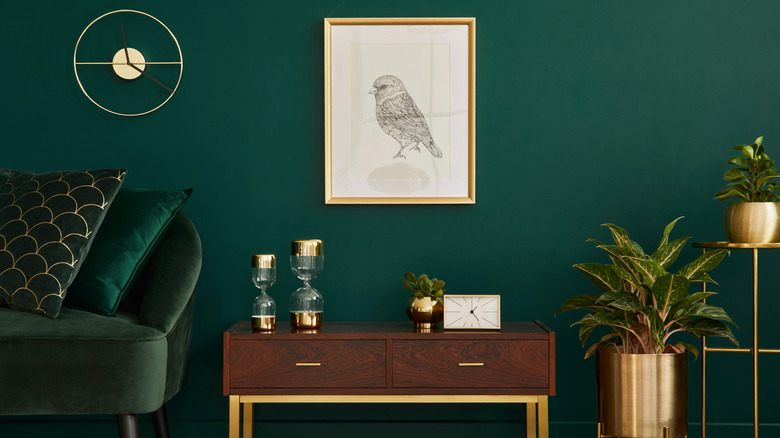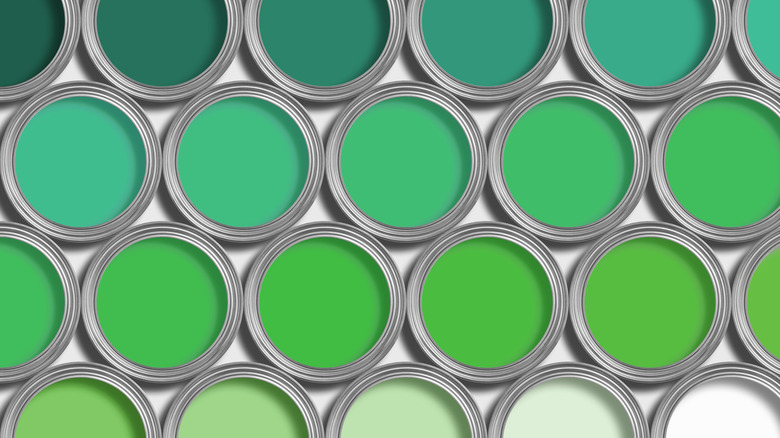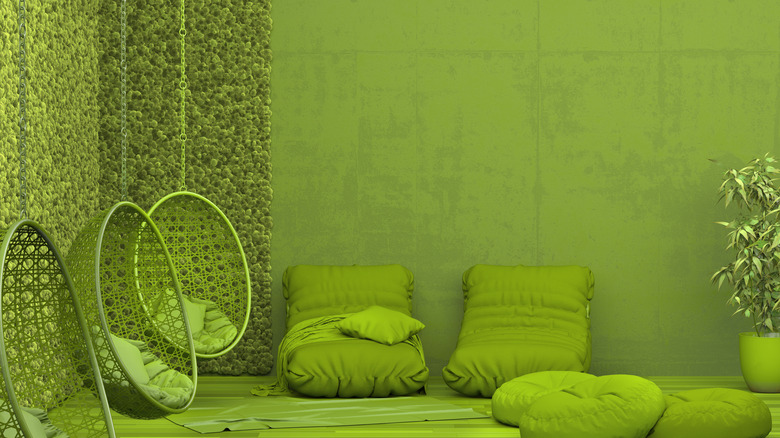Why Some People Are Dead-Set Against Painting Their Home's Interior Green
Green has been an increasingly popular color for interiors in recent years, in a range of hues and shades from neutral to pastels to jewel tones. Although many people love the color green in all its variable splendor, there are beliefs from history and folklore about the color green being problematic for interior decor. Some of the folkloric and historical stories about the color green have convinced some people it is an unlucky or undesirable color to use, particularly for painting walls.
There's actually nothing wrong with painting your walls green or any other color if that's what you want to do. There may be various aesthetic or even practical reasons for not choosing one wall color over another (for example, bright red walls can interfere with sleep), but these reasons aren't connected to luck. Still, it's interesting to explore these beliefs and try to understand why they persist in influencing people's choices of colors in paint and furnishing.
Why is green, specifically, associated with being unlucky? With the custom of wearing green on Saint Patrick's Day and the color's association with "the luck o' the Irish," it seems odd that there are myths about the color negatively affecting luck or fortune. It turns out that the negative associations with green walls are primarily based on the physical characteristics of green paints and pigments in history.
The toxicity of green
Paint and pigments were once made with minerals and other substances that were not yet known to be toxic. A number of colors of paint and dye were later revealed to be harmful, and alternatives to these pigments had to be found. One of the best-known toxic colors was Scheele's green, named for the Swiss chemist who invented it in the 18th century. The legacy of this pigment is still affecting opinions about the use of the color green for interiors.
Scheele's green was neither too yellow nor too blue but a vivid shade in between, an emerald reminiscent of leaves and grass full of chlorophyll. This artificial green became so popular, ironically, because it mimicked the colors of nature, even though the presence of arsenic in the paint made it toxic for indoor use. The revelation of its danger led to the ongoing belief that green is an unlucky color.
The principles of color symbolism, based partly on the psychological impacts of color, are often employed in visual art, advertising, and many forms of public-facing design. Green's symbolic meanings are diverse. Green is associated with nature, which may contribute to an association with healing or harmoniousness. Green is at the center of the color spectrum, providing balance between the warm and cool colors. And folklore scholars say that green is sometimes associated with poison, decay, mold, or disease.
The meaning of green
Vivid emerald green is a powerful color in design, partly because it is unexpected. Consider the controversial green glass building in London known as The Gherkin, nicknamed for a pickle. In costume design, bright, vivid green is often associated with dangerous or problematic characters and emotions, such as envy, jealousy, or greed. We see this with the green-skinned Wicked Witch of the West in "The Wizard of Oz," the seductive dancer played by Cyd Charisse in "Singin' in the Rain," and the iconic silk evening gown worn by Keira Knightley in "Atonement."
Color meanings can be deeply ingrained in culture. Some of the symbolism associated with green comes from the folklore of the British Isles — the stories of fairies and other nature spirits, like Jenny Greenteeth, a swamp hag, and leprechauns, the impish characters from Irish legends. Over time, the various threads of history and folklore trickle down to create contemporary assumptions, including colors being associated with bad luck.
There may be any number of reasons why some people don't want to choose green as an interior decor color. The legitimate historical concern about toxic compounds such as arsenic has seemingly become associated with folkloric ideas about green related to poison, decay, danger, or negative emotional states. But with more paint manufacturers developing paints with less-toxic ingredients, even green is a color to feel good about choosing.


